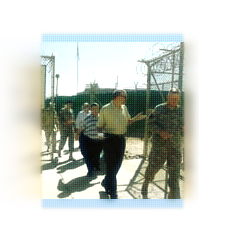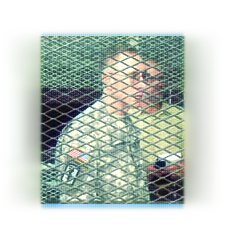|
|
 |
 |
DESTINATION GUANTANAMO BAY, CUBA
The Legitimacy of GTMO: An Eyewitness Report, Page 17
A Travel Journal by Dr. Eric A. Zillmer
Pacifico Professor of Psychology at Drexel University

< PREVIOUS SECTION | NEXT SECTION >
|
 |
 |
 Camp Delta Camp Delta
1400

Colonel I Don’t Know was our guide for the different detention camps, inside the wire, as it is called. We mostly saw parts of the camps that were vacant; that is, during our visit GTMO was only at about 33% capacity. The detention camps are no picnic; the detainees are not afforded much liberties or personal possessions. Two hours of recreation are typical in an outdoor recreation cell that measures approximately 20 by 20 feet. The only exercise equipment I saw was a cement block that serves as a stepper, although I have been told that there are other modern cardio exercise equipment available.
Everywhere there are stenciled markers indicating the direction of Mecca to allow for daily prayers by the detainees. One such marker also indicated the distance to Mecca, 12,735 km using the metric system. In general, the camp areas are similar to maximum-security environments that one would encounter in U.S. correctional facilities. We were not allowed to meet with any of the detainees, although we were able to observe a small group of them and later, in Camp 5, a detainee shouted loudly at us incomprehensibly.
NEXT...
|
|
|